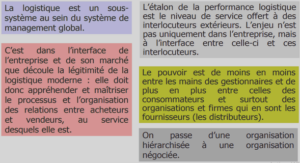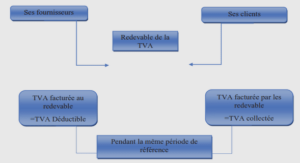Bombardier C Series
The C Series was a product development project performed by the original equipment manufacturer (OEM) Bombardier. It was projected to be a quieter and lighter narrowbody commercial aircraft, consuming 20 % less fuel than its closest competitor products. To achieve these goals, Bombardier needed major system suppliers, su ch as Pratt & Whitney, which developed a more fuel-efficient and silent engine. In addition 36 to the new engine, the aircraft incorporated many new technologies, lightweight composite materials and metal alloys, fly-by-wire flight control systems and design and manufacturing processes (Committee, 2013, p. 16; Owram, 2015). According to a former technical leader who worked at Bombardier and Boeing, the C Series aircraft was a clean-sheet design, meaning it was not an incremental improvement of an existing aircraft platform. Moreover, he stated that Bombardier engineers did not have experience in developing su ch an innovative product (Owram, 2015).
Consequently, the project faced technical problems, including complex issues with its major suppliers Shenyang Aircraft Corporation (SAC) (La rocque, 2013) and Pratt Whitney (Tomesco, 2016). In addition to the technical problems, aviation experts stated that Bombardier faced leadership management problems related to the new chief executive officer (CEO) and a change of senior executives (Owram, 2015; Patriquin, 2016). At the direction ofthe new CEO, Bombardier undertook three product development projects concurrently (Figure 1.2): the C Series, the Learjet 85 and the new Global 7000/8000 (Owram, 2015; Patriquin, 2016). This concurrency created competing demands for engineering specialists and tinancial resources between the projects (Patriquin, 2016). The C Series project delivered an outstanding product that exceeded the product performance requirements (Sorensen, 2015). However, the project management targets, su ch as cost and schedule, were overrun 69 % and 50 %, respectively (Owram, 2015). According to Dinsmore and Cooke-Davies (2005) projects are means to accomplish strategic goals and deliver profit for organization shareholders; therefore, achieving project management targets is important to enable an organization’s competitiveness and market survival.
Boeing 787 Dreamliner Boeing is an organization with more than 100 years of experience in designing aircraft. In 1996, Boeing acquired McDonnelI Douglas, another experienced organization in the aeronautical industry. However, aIl the organizational experience did not enable it to avoid the occurrence of several problems during the development of the 787 Dreamliner. Again, project problems are related to product technical problems and management problems that affected the project time and co st targets. Like Bombardier’s C Series, the Boeing 787 Dreamliner concept also aimed to reduce noise, emissions and approximately 20 % of fuel consumption (Gaynor, 2015). One of the large product technical challenges was the use of composite mate rial instead ofaluminum in over 50 % of the design of the aircraft body (Nelson, 2009). Although composite material was not new, it had never been used to su ch an extent in an aircraft (Gaynor, 2015). In addition to the composite, the introduction of new avionic systems and fly-by-wire controls was also technically challenging.
AlI of these aspects were new for the organization; thus, more time was needed for testing and reworking during the prototype and test phases, which was not anticipated in the project management planning (King, 2007; Shenhar, Holzmann, Melamed, & Zhao, 2016). Conceming the managerial problems, for the first time in its history, Boeing outsourced the design and manufacturing of Il major aircraft systems based on a new risk and revenue sharing contractual model (Gaynor, 2015; Shenhar et al., 2016). The global supply network comprised 700 suppliers, ofwhich 70 % were not local (Shenhar et al., 2016); thus, the suppliers were spread all over the globe. Hence, different cultural backgrounds, languages, working standards, local govemment regulations and interdependent design elements added ev en more complexity to the supply network (Gaynor, 2015). In addition, an aggressive four-year project schedule was imposed to develop a new highly innovative product and an assembly line ready to pro duce one Dreamliner every 3 days. The result was a highly innovative aircraft ofwhich the final development cost was more than double the initial 40 billion dollars, and the delivery was approximately 3 years late (Shenhar et al., 2016).
Airbus A380 Another well-known pro du ct development project that resulted in a market-disruptor product was the double-deck A380 commercial jet. From the project management perspective, it did not achieve the initial project targets (King, 2007); for example, the estimated development project cost was approximately 13 billion dollars, and the fmal cost was approximately 25 billion dollars (N. Clark, 2006; Tsang & Segal, 2019). The A380 was the most complex project that Airbus had ever designed and manufactured (N. Clark, 2006). The aircraft had a maximum capacity about 840 passengers (BBC, 2005). In addition to the gigantic size, its design included composite material and new hydraulic, electrical and avionics systems (N. Clark, 2006). Each A380 cost approximately U$270 million (Stark, 2005). A peculiarity ofthis enormous aircraft is that the airports that were expected to operate the A380, for example, those in Sydney, Australia (King, 2007), and Heathrow, England (BBC, 2005), needed to invest millions of dollars in infrastructure (Sato & Chagas Jr., 2014). In January 2005, the A380 was unveiled during an official ceremony in the presence of the European and Airbus consortium leaders France, Germany, the United Kingdom and Spain; approximately 5000 invitees were present (Airbus, 2005). However, in June the same year, Airbus announced publicly that the delivery of the A380 would be delayed due to manufacturing problems (N. Clark, 2006). Ultimately, there was a 2- year delay.
The major technical problem was the preassembled electrical hamesses that were designed and manufactured at a German production site in Hamburg. The hamesses had the incorrect dimension: they were short. The failure was discovered during the assembly-line process in Toulouse, France, months after the hamesses had been manufactured and only after the hamesses had been routed in the aircraft. Consequently, a massive amount of inventory totaling several hundred kilometers of electrical wire had to be discarded (N. Clark, 2006). Considering that the A380 has 1,150 different functions demanding approximately 100,000 different cables, the error was costly in terms ofboth time and money. Rework activities needed to be undertaken, including a complete redesign of the electrical hamesses from scratch. Among the identified causes was the fact that the German and French facilities were using different computer-aided design (CAD) software. Hence, the information about the electrical hamess definition was incompatible between the development and production teams (N. Clark, 2006; Kerzner, 2014, p. 252; Nevison, 2013). According to specialists, ev en though the problem was technical in nature, it was also a reflection of the managerial problems that Airbus was undergoing (Stark, 2007). Since its foundation in 1970, Airbus aimed to integrate several existing organizations from 4 European countries into the Airbus consortium and to surpass Boeing products (Richter, 2017, p. 3). The national rivalry between French and German top executives was evident during the A380 project, resulting in poor coordination and communication between the French and German teams (Nevison, 2013).
Po or product development project performance causes According to (Williams, 2005) a compound of three main factors are the causes underling the poor performance of complex projects: the project complexity, uncertainty and tight time constraint, which are briefly discussed below. The complexity is associated with the multitude of elements that make up the project as weIl as the interconnections between those elements (Williams, 2005). The elements of a project includes human resources, suppliers, activities and communication channels. In a product development project, those elements also include the product parts, systems and subsystems. One challenge concerning the complexity factor is that a change to one element will probably trigger a change in the elements connected to it (Jarratt, Eckert, Caldwell, & Clarkson, 2010). The uncertainty of a project can be associated with the level of available information. According to the dimensions presented by Turner and Cochrane (1993), uncertainty can be related to how weIl defined the goals and methods in a project are. In a product development project, uncertainty concerns both the product itself and to the process to develop the product. Considering that the product development project is a creative process that starts from a concept and finishes with a physical artifact (Ulrich & Eppinger, 2016, p. 6), the uncertainty decreases progressively as the project life cycle progresses and more information become available. However, it becomes a chaIIenge when new information invalidates previous decisions, resulting in project changes (Karniel & Reich, 20 Il, p. 20).
Last, the tight time-constraint factor exists because the product development projects objective is to offer a product to be sold in the market (Kalluri & Kodali, 2014); thus, organizations seek to complete product development as quickly as possible (Belay, Kekale, & Helo, 2011) in order to keep or exp and their market (Wysocki, 2011). However, the tight time-constraint can become a challenge when schedule-driven decisions neglects complexity and uncertainty. According to Yaghootkar and Gil (2012), a schedule-driven attitude can degrade an organization’s capability to deliver a project on time. In light of the three factors, it is notable that the tight time constraint is in opposition to the time needed to decrease the project uncertainties. By contrast, when the project uncertainties invalidate the initial assumptions or hypothesis, it triggers changes in the project that may trigger other changes due to the project complexity, increasing the amount of activities to be executed.
Consequently, the increased number of activities may favor ev en more schedule-driven decisions due to the tight time constraint, which in turn overlooks the complexity and uncertainties of the project, restarting new vicious circles that contribute to the poor project performance results. In addition to the three fundamental factors presented by (Williams, 2005) – project complexity, uncertainty and tight time constraint – Wysocki (20 Il) includes change as one of the challenges imposed by the contemporary dynamic project environment. The literature presents other studies that have investigated several topics that impact project performance. Table 1.5 lists sorne ofthem. Among the topics presented in Table 1.5, rework is the main topic of interest of this research. Rework is within one of the seven types ofwaste in manufacturing identitied by Taiichi Ohno applied to product development processes (Oppenheim, 2011, p. 19; Woschke, Haase, & LautenschHiger, 2016). It relates to activities that are expected to be done right the tirst time. However, due to problems such as improper planning or coordination, they fail and require rework. Therefore, rework is a source ofwaste in product development projects and waste must be eliminated in order to deliver the project on time, on budget and using minimal resources. The presence of rework in product development projects indicates that the project performance can be improved if this source of waste is eliminated.
SYNTIlÈSE |






